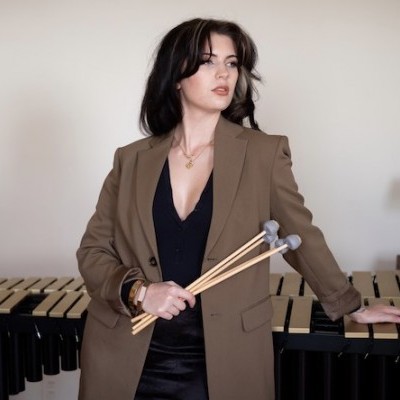Jun 3, 2025 11:25 AM
In Memoriam: Al Foster, 1943–2025
Al Foster, a drummer regarded for his fluency across the bebop, post-bop and funk/fusion lineages of jazz, died May 28…

All of Miles Davis’ recordings with his namesake nonet are compiled on The Complete Birth Of The Cool.
(Photo: Courtesy Blue Note/UMe)This year marks the 70th anniversary of the short-lived, but now legendary, Miles Davis Nonet. Its recordings, first issued in 1949, attracted only modest attention and praise from jazz fans and critics until 1957, when they were compiled for the newly popular LP format as Birth Of The Cool. This was a marketing masterstroke that capitalized on the rising popularity of “cool” jazz and elevated the nonet recordings from a faintly remembered curio into the realm of overlooked masterpiece.
To mark the anniversary, Blue Note/UMe has issued a set titled The Complete Birth Of The Cool, including the 12 studio sides, plus all known recordings of the nonet’s live shows. Those took place in September 1948 at New York’s Royal Roost, a long-defunct Broadway chicken restaurant that served bebop on the side, and whose shows were broadcast on WMCA by famed radio DJ “Symphony Sid” Torin.
Although the set is available in vinyl, CD and digital formats, the two-LP version is especially notable: It marks the first time since 1957 that the recordings have been remastered for vinyl, and the first time that all the Birth Of The Cool performances—studio and live—are available together on LP. The accompanying book includes informative essays by Ashley Kahn, Gerry Mulligan and Phil Schaap, along with gorgeous photos.
The nonet grew out of impassioned intellectual discussions held in arranger Gil Evans’ basement room behind a laundry on 55th Street, a “salon” frequented by many of the music’s rising stars. Two factors especially distinguished the nonet’s sound from previous iterations of bebop: the orchestration—a six-member horn choir, featuring French horn and tuba, backed by a rhythm section—and the arranging concepts of Evans, which he had developed while working for the Claude Thornhill Orchestra.
As Davis recalled in his 1989 autobiography (written with Quincy Troupe), “The Birth Of The Cool album came from some of the sessions we did trying to sound like Claude Thornhill’s band. We wanted that sound, but the difference was that we wanted it as small as possible.”
For fans just discovering this music, it might not sound as “cool” as the title suggests: Some of the playing is actually pretty hot, especially the live material, propelled by Max Roach’s drums. Balancing the heat, however, is a heady mix of 20th-century classicism mixed with bebop, the approach Evans honed with Thornhill. Not all the arrangements are by Evans, but his overwhelming influence is made clear in the dense, choir-like, parallel voicings of the six horns—as opposed to the usual colloquy among brass, woodwinds and rhythm sections of traditional big bands.
“It’s something I listened to a lot back in 10th grade, when I was first getting into Miles,” trumpeter Jeremy Pelt said recently. “These recordings are iconic. They should be studied from a lot of different angles. It’s like watching The Godfather: You watch it one way the first time, then ... you watch it again and start to think about some things; it grows on you. I listen back to solos I’ve been able to sing for 25 years, and they have new meaning to me ... . [Those musicians] were dissecting chords in a very hip way. It was bebop in sheep’s clothing.”
The Complete Birth Of The Cool provides invaluable snapshots of several young, future jazz masters who were just beginning to crystallize their sound, especially the 22-year-old Davis. On his first recordings as a leader, he delivers sumptuous trumpet lines with hints of the lyricism and mystery to come. DB

Foster was truly a drummer to the stars, including Miles Davis, Sonny Rollins and Joe Henderson.
Jun 3, 2025 11:25 AM
Al Foster, a drummer regarded for his fluency across the bebop, post-bop and funk/fusion lineages of jazz, died May 28…

“Branford’s playing has steadily improved,” says younger brother Wynton Marsalis. “He’s just gotten more and more serious.”
May 20, 2025 11:58 AM
Branford Marsalis was on the road again. Coffee cup in hand, the saxophonist — sporting a gray hoodie and a look of…

“What did I want more of when I was this age?” Sasha Berliner asks when she’s in her teaching mode.
May 13, 2025 12:39 PM
Part of the jazz vibraphone conversation since her late teens, Sasha Berliner has long come across as a fully formed…

Roscoe Mitchell will receive a Lifetime Achievement award at this year’s Vision Festival.
May 27, 2025 6:21 PM
Arts for Art has announced the full lineup for the 2025 Vision Festival, which will run June 2–7 at Roulette…

Benny Benack III and his quartet took the Midwest Jazz Collective’s route for a test run this spring.
Jun 3, 2025 10:31 AM
The time and labor required to tour is, for many musicians, daunting at best and prohibitive at worst. It’s hardly…